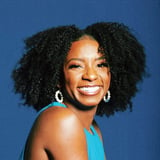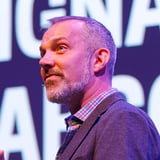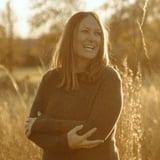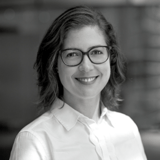Summary
The research industry struggles with effectively communicating complex findings, meaning valuable knowledge is often misunderstood or under-utilized. Dense reports and impenetrable data presentations can carry the blame for much of this. However, embracing visual frameworks and storytelling techniques can make complex data more digestible and engaging. Frameworks thinking not only helps findings spread further, but empowers stakeholders to “think with the ideas”—enhancing both the impact and audience of insight. The session will look at some examples of powerful visual framework to enable attendees to learn how to transform complex data into engaging visuals and narratives, and give clear strategies for making insight more accessible and impactful.
Key Insights
-
•
Visual frameworks help transform complex qualitative data into impactful, shareable stories that travel through organizations.
-
•
Drawing and visual thinking engage different brain pathways and promote new connections and ideas.
-
•
Frameworks should be targeted to specific stakeholders to maximize their usefulness and adoption.
-
•
Effective frameworks balance abstraction and selectivity, focusing on key differences, processes, or hierarchies rather than full representation.
-
•
Iteration with team feedback is crucial; initial frameworks often look imperfect and require refinement.
-
•
Collaboration with designers improves visual clarity and prevents misinterpretations, especially across cultures.
-
•
Using familiar visual metaphors and diagrams (e.g., two-by-twos, pyramids, feedback loops) eases stakeholder understanding.
-
•
Presenting frameworks as conversation starters encourages deeper discussion and preserves the richness of qualitative data.
-
•
Different organizational contexts call for adapting the visual style and language of frameworks accordingly.
-
•
Small time investments in sketching and sharing rough visuals can buy more time and impact than rushing text-only top lines.
Notable Quotes
"Draw your ideas, draw your ideas — it unlocked a skill I never thought I had and made my ideas have more traction."
"The retina is a primary brain surface; when we look at things differently, we think differently."
"Data are like minerals dug from the earth; insights are cut stones; frameworks are the jewelry that connects them."
"The act of arranging information becomes an act of insight — the whole is greater than the sum of its parts."
"Always design your high-impact slides for the busy executive in the back of a limo."
"A useful visual abstraction can’t represent everything; it needs to be selective and targeted."
"Frameworks are maps: they help with specific jobs like navigation, not full territory representation."
"You’re not going to get it right first time. It’s going to look weird, that’s fine — enjoy the process."
"Bring your clients and stakeholders into the process early to make sure the visual language works for them."
"In engineering-heavy organizations, piggyback on existing visual languages like critical user journeys to gain acceptance."
Or choose a question:















More Videos

"You can’t begin a design process already with the end solution in your head—let the process inspire new insights."
Steve ChaparroBringing Into Alignment Brand, Culture and Space
August 13, 2020

"The CEO wanted rapport, not just productivity, and the collaborative poster created that from scratch."
Elizabeth ChurchillExploring Cadence: You, Your Team, and Your Enterprise
June 8, 2017

"Independence did not just mean performing duties without assistance. It meant a radical self-determination."
Sha HwangThe First Fifty Years of Civic Design
November 16, 2022

"If you were blindsided recently, I’ve been there. I just really appreciated a kind voice because I didn’t hear a single word they said."
Corey Nelson Amy SanteeLayoffs
November 15, 2022

"AI doesn’t create much new; it accelerates the process and frees humans to focus on uniquely human work."
Noz UrbinaRapid AI-powered UX (RAUX): A framework for empowering human designers
May 1, 2025

"The new chapter in the second edition looks at service design as a change methodology for organizations, recognizing how ambitious it can be."
Lavrans Løvlie Ben ReasonAsk me anything – Authors of Service Design: From Insight to Implementation
November 19, 2025

"Career growth is mostly about skills development, responsibility, and influence rather than just compensation or titles."
Peter MerholzThe 2025 State of UX/Design Organizational Health
November 12, 2025

"The Shakers’ principled approach to design was a precursor to Bauhaus’s form follows function and today’s user-centered values."
Daniel GloydWarming the User Experience: Lessons from America's first and most radical human-centered designers
May 9, 2024

"Networking isn't just knowing people, it's about staying in warm connection with people over time."
Louis RosenfeldCoffee with Lou
January 11, 2024
















